Spring Cleaning Already?

by Anne Rivas
I grew up on stories about good housekeepers whose homes were always immaculate and ready for company. I heard about moving the stove and refrigerator to clean behind and underneath them, about taking the rugs outside to beat the dust out of them, and washing the feathers and re-stuffing the featherbeds and pillows. I know no one who actually did these things, but there’s a reason for the stories.
Dust mites, dander and mold – Oh My! These all live in our houses, along with bacteria and viruses, and can cause anything from minor irritation to serious illness.
Hundreds of thousands of dust mites can live in bedding, mattresses, and upholstered furniture. They generate some of the most common substances that can trigger allergic reactions and asthma. There are no indoor spaces without mold spores. Problems arise when materials remain wet long enough for mold to grow.
Pet dander is composed of tiny flecks of skin shed by cats, dogs, rodents and birds – in short, by everything that has fur or feathers. Pet dander is very light and small, and remains suspended in the air for a long time. It sticks to furniture, fabrics and items carried into and out of the home. It is easily spread and can be found in homes and buildings without pets.
Above are the reasons for those tales of heroic housekeepers. The American Lung Association offers the following recommendations for keeping our homes healthy:
- Have adequate ventilation to combat viruses, bacteria and mold
- Keeping humidity levels in our homes under 50% creates a less hospitable environment for mold and dust mites
- Use exhaust fans in the kitchen and bathroom
- Take care of leaks and spills quickly
- Keep refrigerator drip pans clean
- Use a vacuum cleaner equipped with a HEPA filter, or a central whole-house vacuum system
- Damp mop hard floors and dust with a damp cloth
- Damp dust and mop regularly
- Use rugs that can be taken outside and cleaned instead of carpeting, which collects and holds onto dust, dust mites, and pet dander
- Remove shoes when entering the house
- Replace your furnace filter regularly
These steps are an easy way to improve our air quality and keep our families healthy.
It’s early for spring cleaning, but it feels good to at least open the windows while we can!
UNMC/Nebraska Medicine announce new sustainability goals
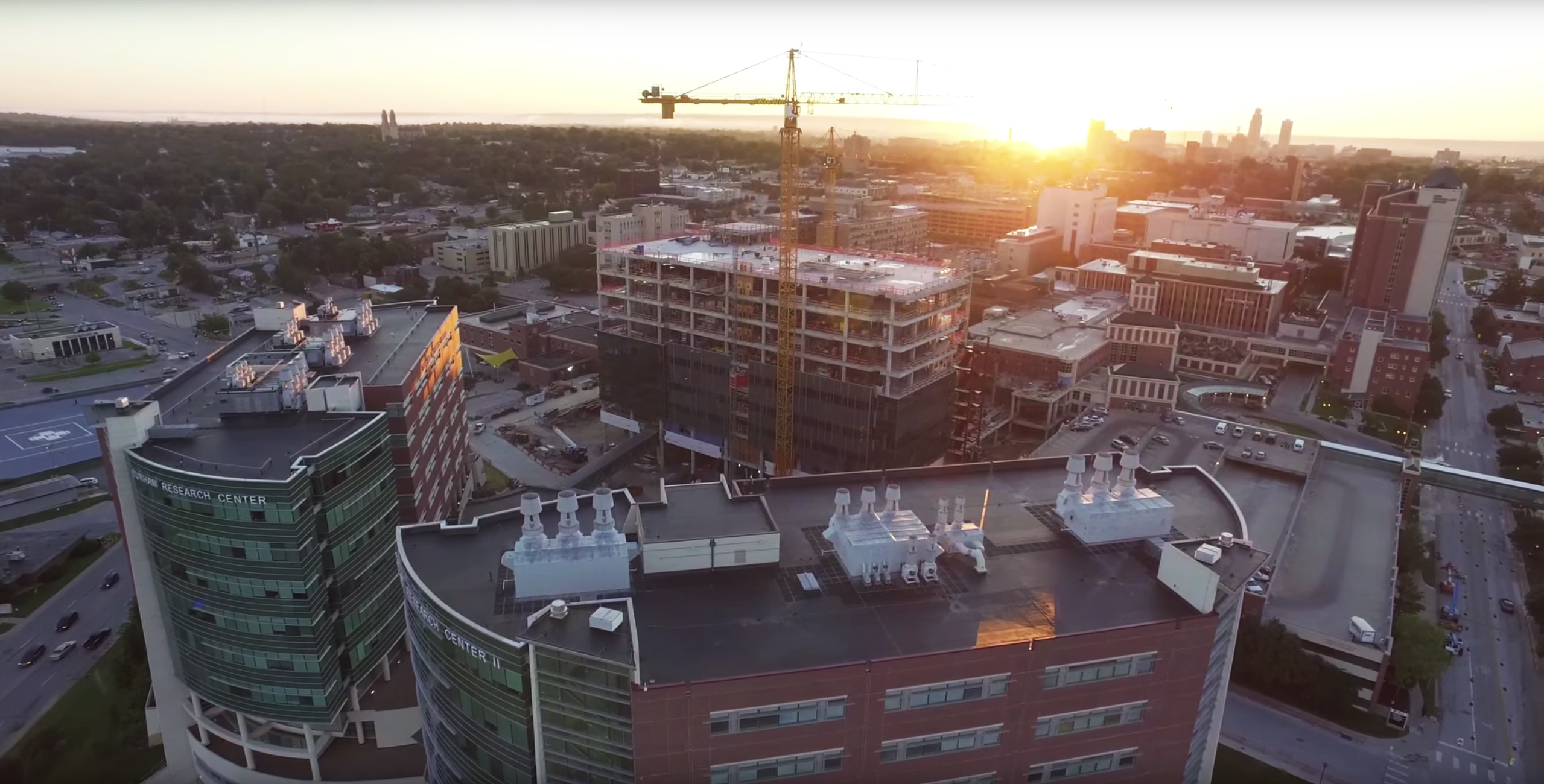
Leaders of the University of Nebraska Medical Center and Nebraska Medicine have announced three lofty, but attainable, sustainability goals related to emissions, water and waste.
The goals – especially aggressive in such a specialized hospital/research setting – call for UNMC and Nebraska Medicine to:
- Become carbon neutral (net zero emissions) by 2030;
- Achieve zero waste by 2030; and
- Use less water than what falls on the main campus during an average rainfall year (currently 104 million gallons) by 2030.
“Achieving these goals will have a substantial, and positive, impact on the medical center’s budget, and more importantly, on the planet and people who live in the community,” said UNMC Chancellor Jeffrey P. Gold, M.D. “Reaching the goals won’t be easy, but they are achievable and work hand-in-hand with our mission to transform lives to create a healthy future for all.”
Last April, UNMC and Nebraska Medicine celebrated having using 25 percent less energy in 2015 than it did five years ago, despite adding more square footage to campus. In addition, the campus reduced both its peak electrical use and domestic water consumption, which conservatively equated to more than $10 million in money the medical center would have had to spend on utilities.
So, what savings do campus leaders anticipate by meeting their new goals? That’s difficult to estimate, they say, but emphasize that no new funds are budgeted for the initiative. Leaders, however, anticipate the initiative will yield greater efficiencies because of new technology, changes to infrastructure and using less resources.
“These goals not only make us strong stewards of taxpayer dollars, but set us apart from other academic health science centers in the country,” said Ken Hansen, associate vice chancellor of facilities at UNMC and vice president of facilities for Nebraska Medicine. “The challenging weather in our state only adds to the complexity of meeting the emissions goal.”
The goals are endorsed by the UNMC and Nebraska Medicine Executive Sustainability Council, which is committed to being an industry leader in sustainability.
Learn more about each goal:
Energy and emissions goals
Net zero carbon emissions requires low-energy buildings, but can use a combination of on-site, off-site renewable energy (wind and solar) to achieve a net zero carbon emission goal. All renewable generation doesn’t have to be on-site to achieve net zero or net positive carbon emissions.
Given that many campus buildings run 24/7, hospitals are one of the most energy intensive types of property, but UNMC and Nebraska Medicine can achieve its net-zero emissions goal by setting energy use intensity targets in new building construction, as well as doing energy updates (lighting, building controls, etc.) in existing buildings. In addition, the medical center supports the Omaha Public Power District’s renewable generation target of 50 percent by 2023, which impacts everyone in the region by burning less coal and creating less pollution.
Waste
The Zero Waste International Alliance and the National Recycling Coalition define zero waste as “diverting 90 percent of all discarded materials from landfill, incinerators, and the environment.”
Campus leaders say a zero waste goal – which excludes biohazardous waste – for UNMC/Nebraska Medicine is a bold goal, but acknowledge that new opportunities will exist as markets change and the campus will be poised to take advantage when they occur.
The medical center also is looking into composting its food waste, but the options for handling that material in a sustainable way are limited in the region today. To accomplish this goal, campus leaders say it likely will require a new economical and reliable outlet in the region.
“The diversity, breadth and volume of materials used on a campus such as the medical center creates an extremely complicated and difficult environment to achieve zero waste,” said Nebraska Medicine CEO Dan DeBehnke, M.D., M.B.A. “Non-patient care areas, of course, have more flexibility, and, although, much will need to change, both internally and externally, for us to achieve the 2030 goal, we are committed to making this happen.”
Water
The Net Zero Water Guidebook defines net zero water as “using only as much water as falls on your site and eliminating all water quality impacts from the site.”
With future medical center expansion and increased water use from mission-focused activities, campus leaders will focus on water use per square foot.
Campus leaders say this goal can be achieved by greater indoor and outdoor water efficiencies (ie: mechanical systems, water use monitoring), harvesting and reusing rainwater and condensation and creating additional retention ponds.
Chill Out
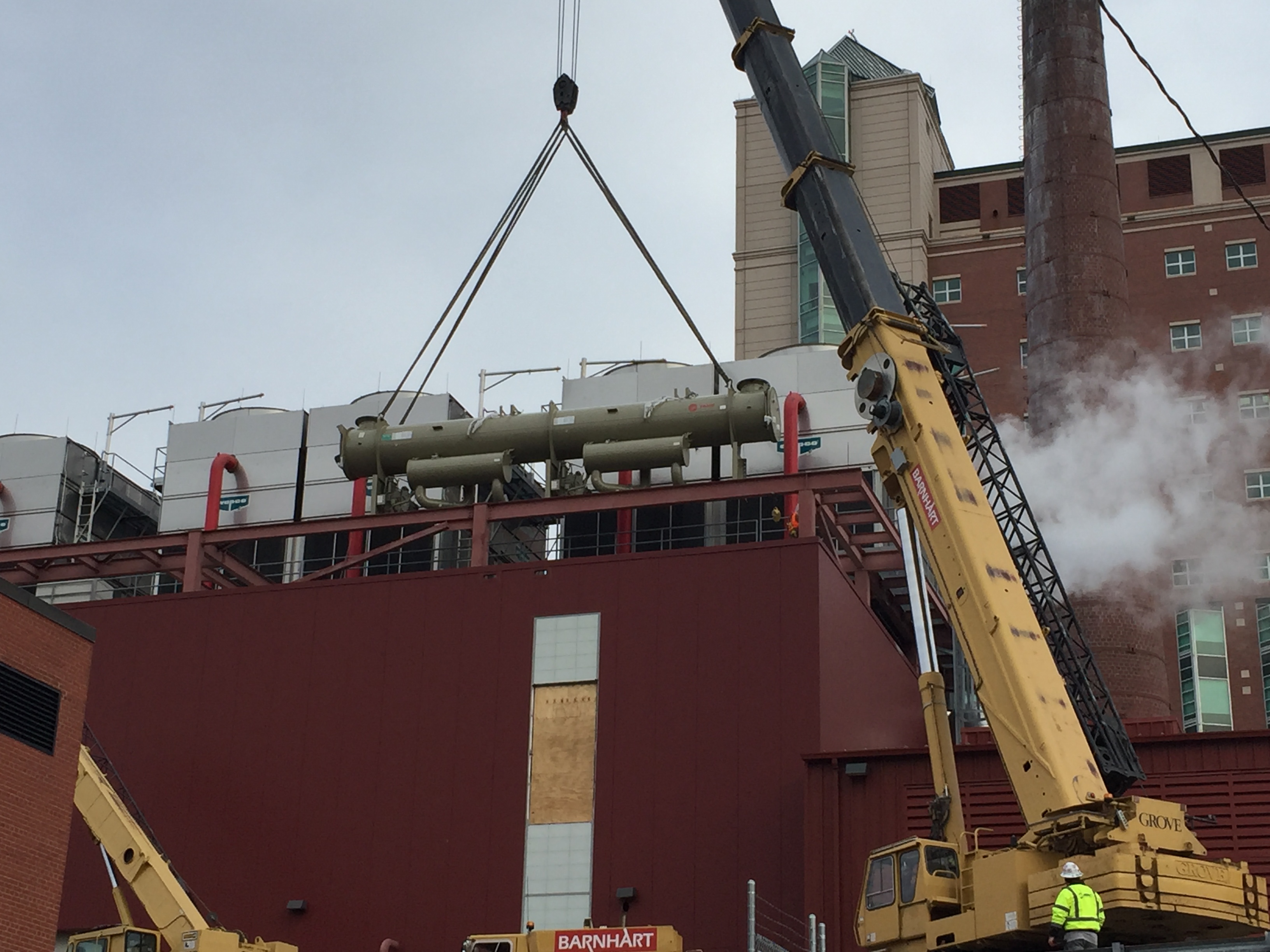
By Melanie Stewart
If you were anywhere near the Central Utility Plant (CUP) in early December, you probably noticed a crane moving sections of something that looked like huge pieces of pipe into the building. Yes, on one of the coldest days of the year, we installed a new chiller.
Normally this is something that only engineers would geek out about. But I’m here to tell you that this chiller is pretty, well, cool.
First, let’s talk about what in the heck a chiller is. A chiller super-cools water and that water is then distributed around campus in very large pipes to provide cooling. This is much more efficient than the thousands of air conditioning units it would take on a campus this size.
this size.
Our new chiller has a very new, efficient, and environmentally responsible refrigerant in it. This new refrigerant does not deplete the ozone if released into the atmosphere (as traditional CFC refrigerants do) and has the best toxicity rating possible. It’s also nonflammable and can run at a lower pressure, making it very safe. While most refrigerants today have a global warming potential of about 1300, our refrigerant’s global warming potential value is just 1!!!
How “cool” is this refrigerant? Only twelve chillers in the world to have it, and we have one—and the first in the United States.
This chiller is a little bigger (classified as a 3700-ton) than our existing chillers and this will allow us to cool the newly opened Lauritzen Outpatient Center and Pharmacy Drug Discovery Buildings, as well as the Fred and Pamela Buffett Cancer Center, with capacity to spare for future buildings.
The refrigerant along with the size of this chiller and new controls allows us to be more efficient—not only is the new chiller more energy efficient than the old ones, it’s size allows us to run it and the other chillers at a comfortable pace. It’s like driving your car on cruise control at 60mph, rather than changing speeds erratically or driving at 100mph. We save energy and all our chillers will last longer.
Getting this chiller in the CUP was no easy feat either. It was factory tested, shipped, tested again, disassembled into 4 pieces, and then craned into the CUP—which had a section of roof removed to get it in and special support structures in place to move the chiller to its permanent home inside the building.
Very cool indeed.
Have a Green Super Sunday!
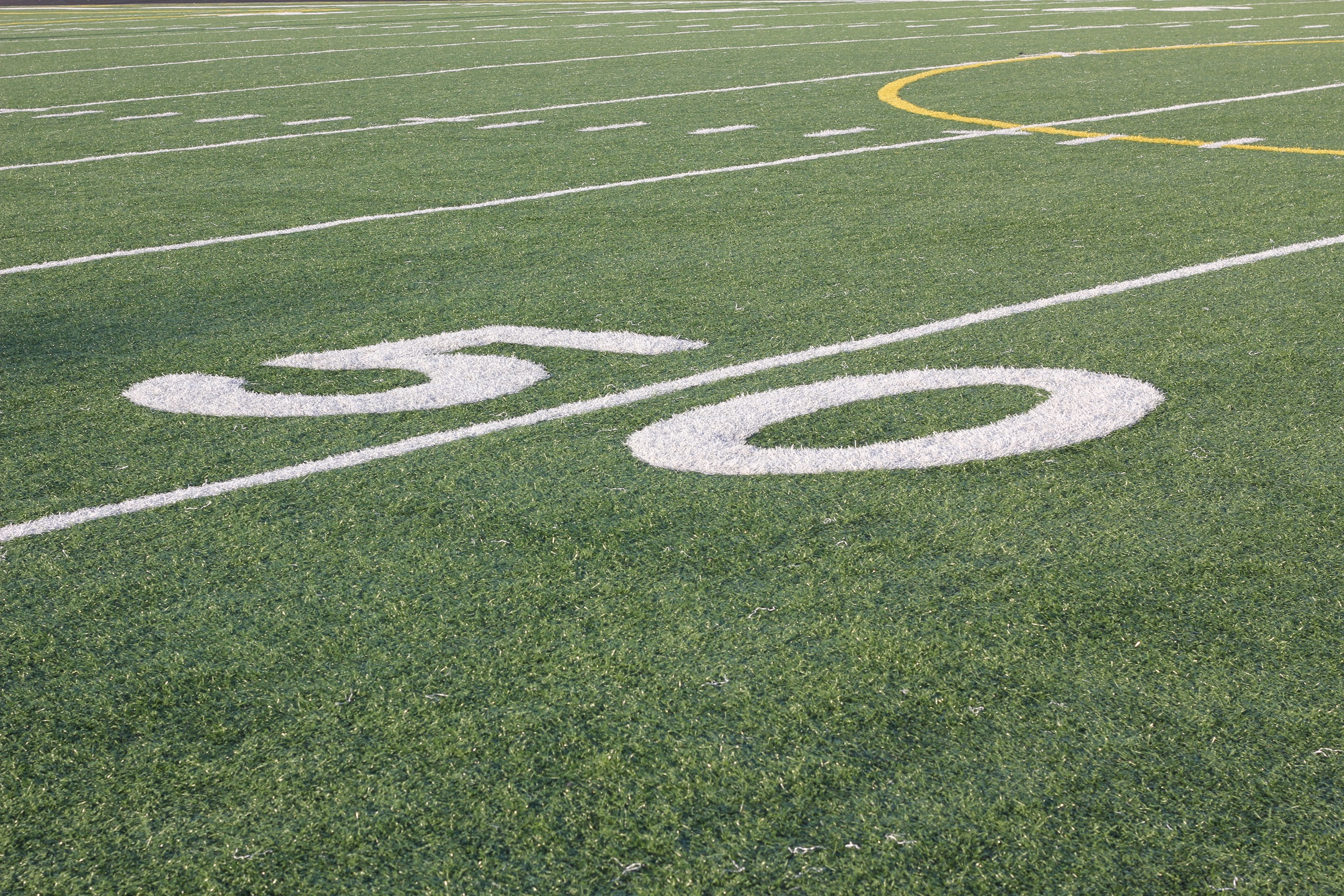
By Melanie Stewart
Are you a Falcons or Patriots fan who can’t wait for Super Sunday? Or do you just watch for the commercials? Or Lady Gaga? At least 120 million Americans will be watching the Super Bowl this Sunday and while it’s a marquee event, it also contributes to a large amount of waste.
LiveGreen can help you make your party a little greener with these easy suggestions:
Buy reusable, then recyclable. If reusable plates/flatware/napkins aren’t an option, buy recyclable items made with recycled material. Strive for plastics labeled #1 & #2, as they are more easily recycled. If you have a compost pile, buy compostable items.
Make it Easy. Make sure appropriate bins are conveniently located and labeled so your guests know where to place items when they are through.
Buy in bulk. Buy larger quantities of the items you know you will need. One family size bag of chips is less packaging than 2 small ones and a case of pop is less packaging than two 12-packs.
Plan Ahead. When shopping for the party, make plans for what you need and make one trip, which saves gas and your valuable time. Remember your reusable shopping bags.
Ditch the packaging materials. Make homemade dips, snacks, and party food instead of the premade, prepacked stuff. You’ll reduce waste and eat healthier. Consider letting guests make their own mini-pizzas instead of delivery and serve filtered water in pitchers instead of bottled water.
Buy local. Locally grown produce & meat, locally made bread/buns & cheese, and locally brewed beer reduce waste while supporting the local economy.
Think Healthy. Need some new recipe ideas that are healthy for both you and the planet, but still taste good? Check out LiveGreen’s Recipe page on Pinterest, loaded with lots of new recipes perfect for your party.
Reuse old footballs or gear to decorate. Have team apparel you don’t wear anymore? Make fun reusable tablecloths or napkins, or other decorations.
Carpool to your party.
Buy rated. If you purchase a new television for the big game, buy an Energy Star certified television and used the in-TV adjustments to save energy while in operation.
Recycle the old television. If you don’t have a place to take it now, LiveGreen will be collecting electronics again during Earth Week in April.
The Landscape
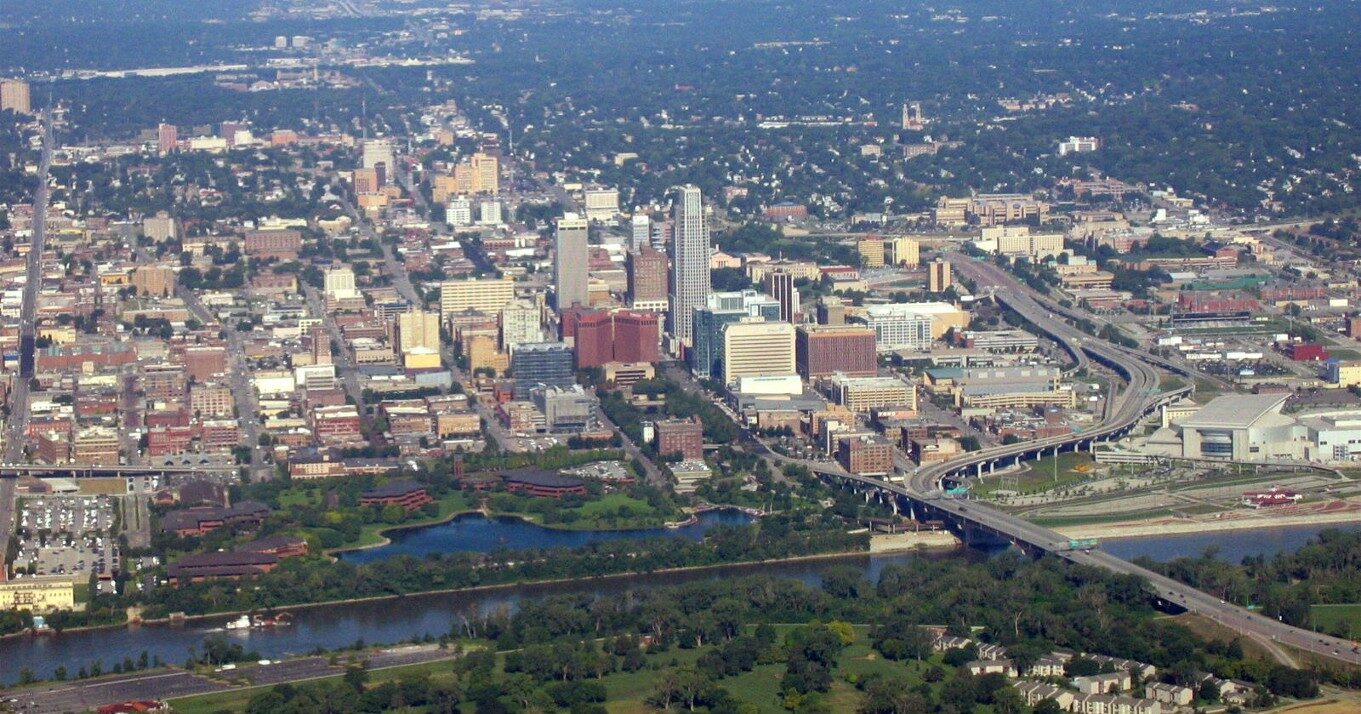
By Melanie Stewart
photo credit: wikipediacommons/RonReiring
The Omaha Community Foundation (OCF) has been helping charitable giving increase local impact. Most people are familiar with OCF’s “Omaha Gives!” event, and they follow local nonprofits as well as philanthropists to determine the needs of the community and then help others to give where it’s needed.
To increase that effect across the greater Omaha metro area, they have created The Landscape.
The Landscape is a data driven look at several aspects of our lives. While there are many great things to celebrate, and the Landscape shows those successes, it can also help to determine what we need to do better. In order for the Douglas/Sarpy/Pottawattamie county area to succeed, we must put resources where they are most needed. This ensures that everyone benefits, regardless of who they are or where they live.
Information is currently available in four key areas: Health, Transportation, Neighborhoods, and Safety, with two more – Education and Workforce – to follow soon. They also expect to explore the arts, environment, economy, and civic engagement.
Scores of community-level data allow us to look at individual snapshots and relate them to real people in our community. The website is easy to navigate, and allows users to dig deeper into the data to learn what is taking place in our community and compare it with national trends.
Interested in Health? There’s information about healthcare, access to and healthy food, obesity, STDs, trauma, behavior, and hunger. Did you know that job and school performance can be related to hunger? That we have a high concentration of food deserts? This can lead to a variety of health issues…and the connections continue.
If you are like me, seeing the data is necessary, but then I need to know how to get involved. There are several ways you can get involved and the site includes an Action Kit that provides concrete ways for you to, well, take action. It can help you find local nonprofits to support with time or money.
As OCF President/CEO Sara Boyd noted in an Omaha World Herald article, “…it’s not just data, it’s people. It’s our people. It’s a launching pad for increased visibility, understanding, cross-sector coordination, action, and accountability on key community issues that have long existed but have not often surfaced with the persistence of attention we need to maintain focus and to amplify and activate champions for change…”
Food for Thought
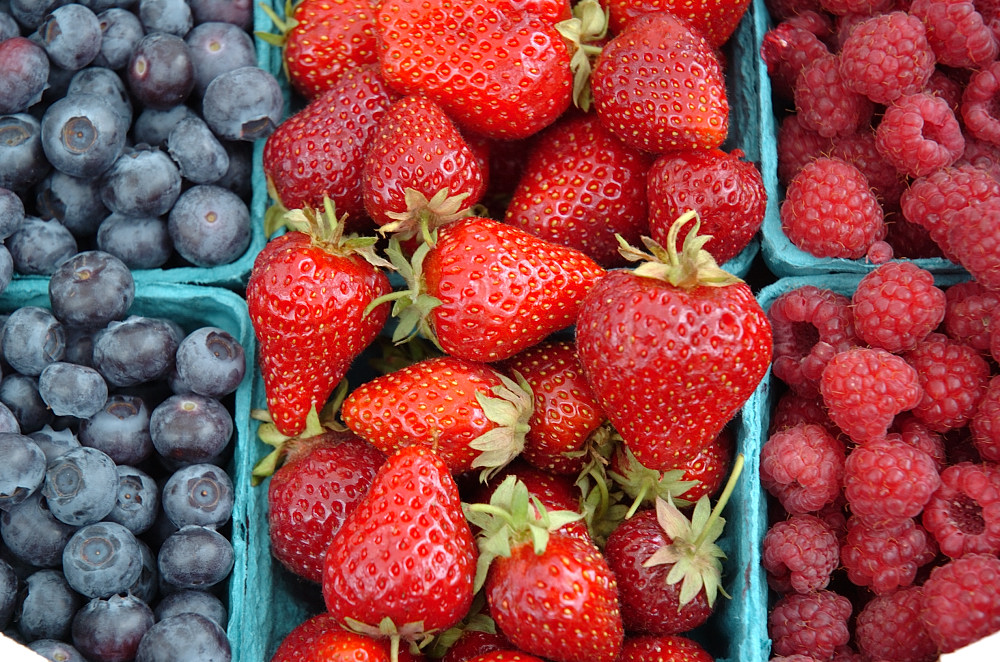
By Anne Rivas
photo credit: freeimages.com/williamstadler
So, did you make any New Year’s resolutions? Was one of them to eat more fruits and vegetables? Did you go to the store and come home with armloads of leafy greens, roots, and fruits to start the New Year right?
Are they still there, slowly rotting in the crisper? Mine are. When you’re home from work, starved and putting dinner together, what do you reach for—the bag of chips on the counter, or the limp hairy carrot at the bottom of the fridge? Be honest, now.
The NRDC calculates that we waste 50 percent more food than we did in the 1970s. I certainly do. Food waste happens at every step of the farm-to-landfill journey, but let’s talk about waste at the consumer stage, because that’s what I’m good at. For instance, I buy a bin of spinach at Costco every week, to hide in my breakfast smoothies. But I’ve been eating oatmeal, so the spinach rots from fridge to compost. Then, thinking of smoothies, I buy more.
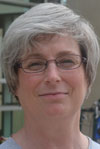
The NRDC lists several factors contributing to consumer food waste: Low prices encourage us to buy more than we need. Food spoils due to improper storage and poor visibility in refrigerators. We misjudge our food needs. We buy impulsively and in bulk. We fail to plan. We prepare more food than we need.
I personally blame refrigerators – those deep, cold caverns in which leftovers sneak to the back and develop from cultures into civilizations. I want two side-by-side drawers at waist height, deep enough to accommodate an opened bottle of wine, one for chilling, and one for freezing. I want to see everything at once.
It’s fun to be seduced by perky tips to improve our lives, but let’s be honest. Do you like to cook? Do you have time to cook? If you eat out a few times a week, don’t shop as if you plan to cook every night. Buy what you’ll eat. If you plan to snack on vegetables, make it easy and don’t buy the chips. When you cook, don’t double the recipe if you don’t eat leftovers. Buy in bulk the items that you eat regularly and that won’t spoil quickly. When produce begins to wilt, chop and freeze the good parts for future dishes. Finally, eat real food—food you recognize, not stuff engineered to look like food.
Ride Your Bike to Work? In January?
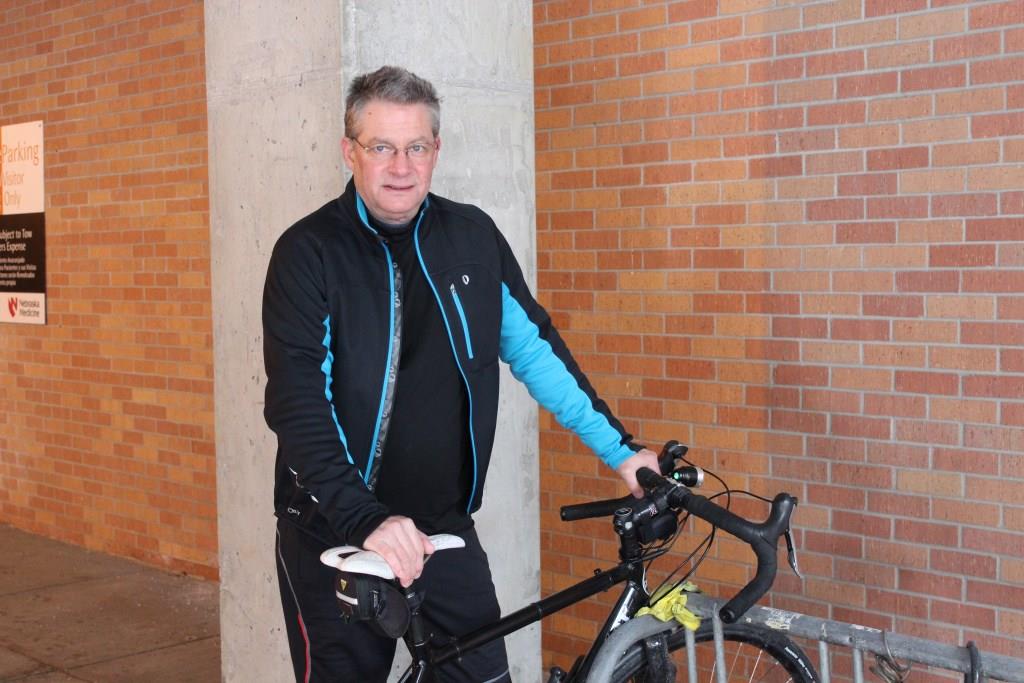
by Kara Haworth
It’s January. You can safely assume it’s freezing outside. While that has many of us only going places where heat is provided, that’s not the case for one of our colleagues. Dave Sweeney, lead chaplain, Spiritual Care, rides his bike to work year round, undeterred by rain, sleet or a little snow!
“Last winter, I only drove once,” he says. That was due to a heavy snowfall.
Why does he do it?
“I’m a bit of a fanatic,” he says, when it comes to biking.
But that’s not the only reason. Sweeney, who is a big supporter of Nebraska Medicine and UNMC’s TravelSmart program, says riding his bike is healthier and more economical than driving his Suburban. If he ever needs need to drive to work, Sweeney says purchasing a single-day $3 parking pass is much cheaper than a monthly parking permit.
Sweeney says his 3-mile bike ride to work is mostly downhill, which helps. He packs his work clothes in his messenger bag. He parks on a bike rack near the Radiation Oncology entrance at the Nebraska Medical Center and showers in the Wellness Center.
The trip takes him about 20 minutes and (knock on wood) he says he’s never had a mishap with a vehicle.
“I never assume they see me,” he says.
While Sweeney knows riding a bike to work isn’t for the majority of folks, he hopes colleagues at least consider alternative transportation.
“I really enjoy it. I think the hospital is making it easier than ever with TravelSmart.”
TravelSmart for good health
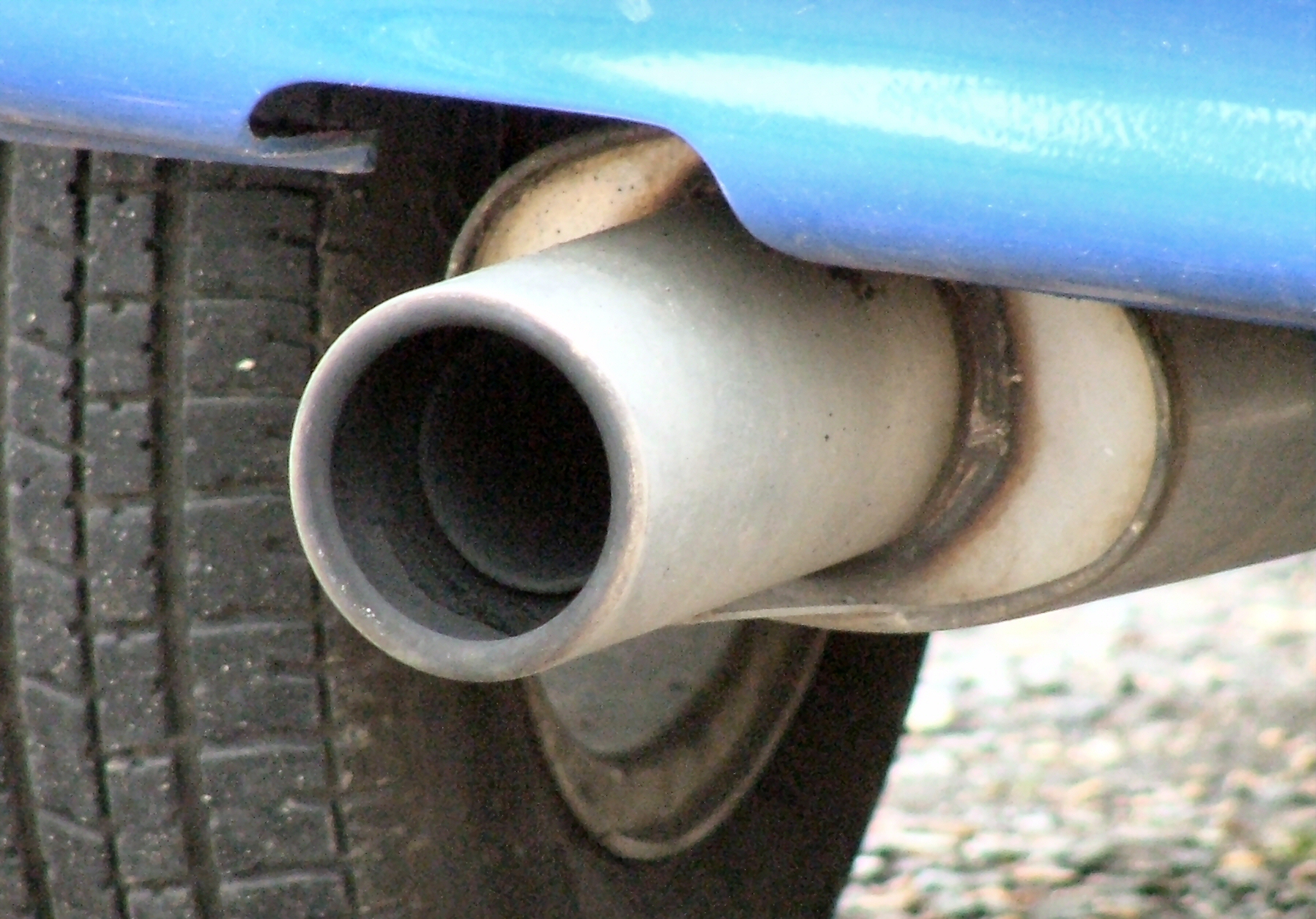
By Melanie Stewart
Did you make a New Year’s Resolution to lose weight, increase your activity, or improve your health? TravelSmart can help with that. Turning your commute time into exercise time is a simple change that can improve your health and save you money. Dr. Laurey Steinke proved this last year.
Maybe you have thought about using active transportation, but don’t feel that it works for you. That could be the case, but TravelSmart has been designed to work for most. It can seem weird to be without a car…what if I need to leave suddenly or became ill? How will I make this work? I know many of you have these concerns too, especially if you have children. We took those concerns seriously in our planning. So keep in mind:
- We offer a FREE emergency ride home. You call, a car comes and takes you where you need to go, 24/7. This includes a free stop along the way…to pick up a prescription, a child, whatever you need.
- It’s FREE to participate in all options, including the free bus pass, and you can use more than one option. There’s no cost to you, no applying for reimbursement.
- You can keep your parking permit. You can give it up to save money, but it’s not required. If you do, we provide flexible parking on the days you need to drive.
- Carpoolers park in the same lot (or better) that they already use, and neither carpooler pays for parking (FREE parking!).
- Don’t have a carpool partner? Try out our carpool matching program. Check it out without making a commitment.
- Cyclists and walkers have FREE access to showers, lockers, and secure indoor bike parking.
- You don’t have to use TravelSmart every day; use it when it works for you.
Benefits:
- Save money on parking, gas, and vehicle maintenance
- Reduce stress by not having to worry about other drivers
- Use commuting time for actions of your choice (reading, homework, social media, etc.)
- Increase your physical activity; burn more calories and manage weight
- Reduce pollution in Omaha, including extremely hazardous ground level ozone; improving health for everyone in the area, helping to accomplish our mission
- Reduce traffic congestion around the med center; reduce parking pressure on campus
Did you know that 1,400 faculty, staff, and students have already registered for TravelSmart? Those who signed up to use the bus took over 14,500 bus trips between August and December; way to go TravelSmarties!!
If you have more questions visit our FAQ page or Video/Resources page.
Thinking about giving it a try but not sure? Email travelsmart@unmc.edu for help in planning a bus route, questions about the program, or giving it a “test drive” without signing up.
Indoor Air Quality: Say NO to CO
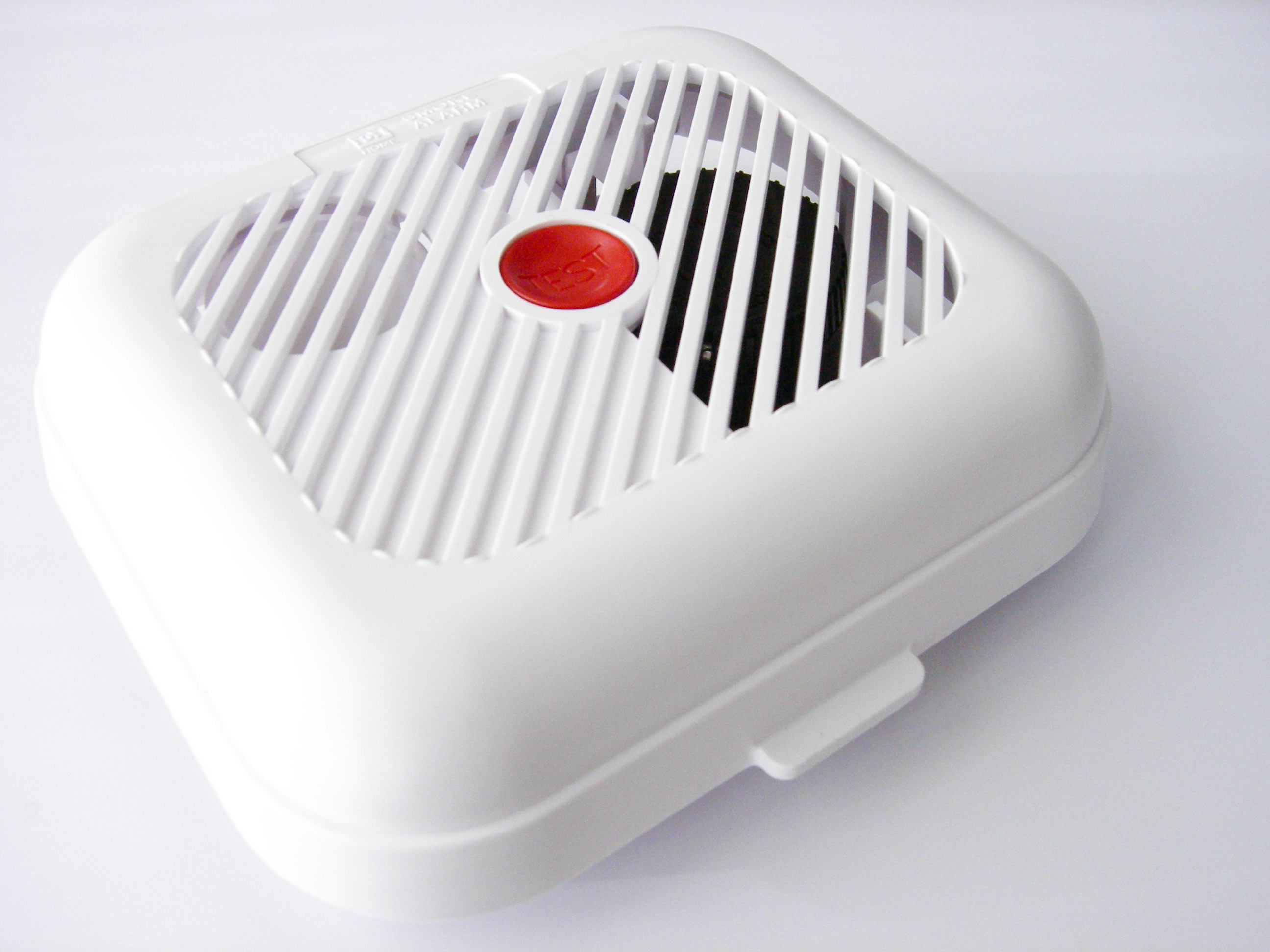
By Joan Mcvoy
Say NO to CO this season.
According to the Centers for Disease Control and Prevention, there are more than 400 deaths and approximately 15,000 emergency room visits each year as a result of carbon monoxide (CO) poisoning. The highest percentage of carbon monoxide exposures occur during the months of November, December, January and February. The coldest temperatures of the winter have yet to arrive.
Carbon monoxide is a highly toxic gas produced when fuels burn incompletely. It has no color, taste or smell. Symptoms of carbon monoxide poisoning include sleepiness, headache, dizziness, blurred vision, vomiting, shortness of breath and convulsions. The first step in treating carbon monoxide poisoning is getting the victim to fresh air. Then seek medical attention immediately.
The Centers for Disease Control and Prevention ranked Nebraska as one of the states with the highest mortality rate from carbon monoxide. It is imperative that the citizens of Nebraska understand the dangers, the symptoms and how to prevent poisoning from carbon monoxide.
The Poison Center offers the following suggestions to help prevent carbon monoxide poisoning:
- Install carbon monoxide alarms on every level of your home.
- Inspect all fuel-burning equipment yearly.
- Vent fuel-burning heaters to the outside.
- Do not use a gas range or an oven for heating a room.
- Never use a charcoal or gas grill inside.
- Never leave a car running in an attached garage, even with the garage door open.
- Generators should be run a safe distance from the home – never next to a window, door or vent.
- Have vehicle muffler and tailpipes checked regularly.
Symptoms of carbon monoxide poisoning resemble those associated with other health conditions that are common among the elderly, especially in the winter. The carbon monoxide death rate is highest among people greater than 65 years of age.
Effective January 1, 2017, a new Nebraska State Law will require carbon monoxide alarms in all residences that are sold, rented or remodeled. The Nebraska Regional Poison Center encourages all residences to have a carbon monoxide alarm.
If you suspect carbon monoxide poisoning or have any questions, contact the Nebraska Regional Poison Center toll-free at 1-800-222-1222. Nurse Specialists are available 24/7 to assist you.
Does your car have a remote start? Make sure your keys are stored safely inside your home; out of the reach of children who may push buttons and not in purses or bags where they may be hit accidentally. Never use the remote start feature when the car is parked in the garage, even if the garage door is open.
More Holiday Cleanup
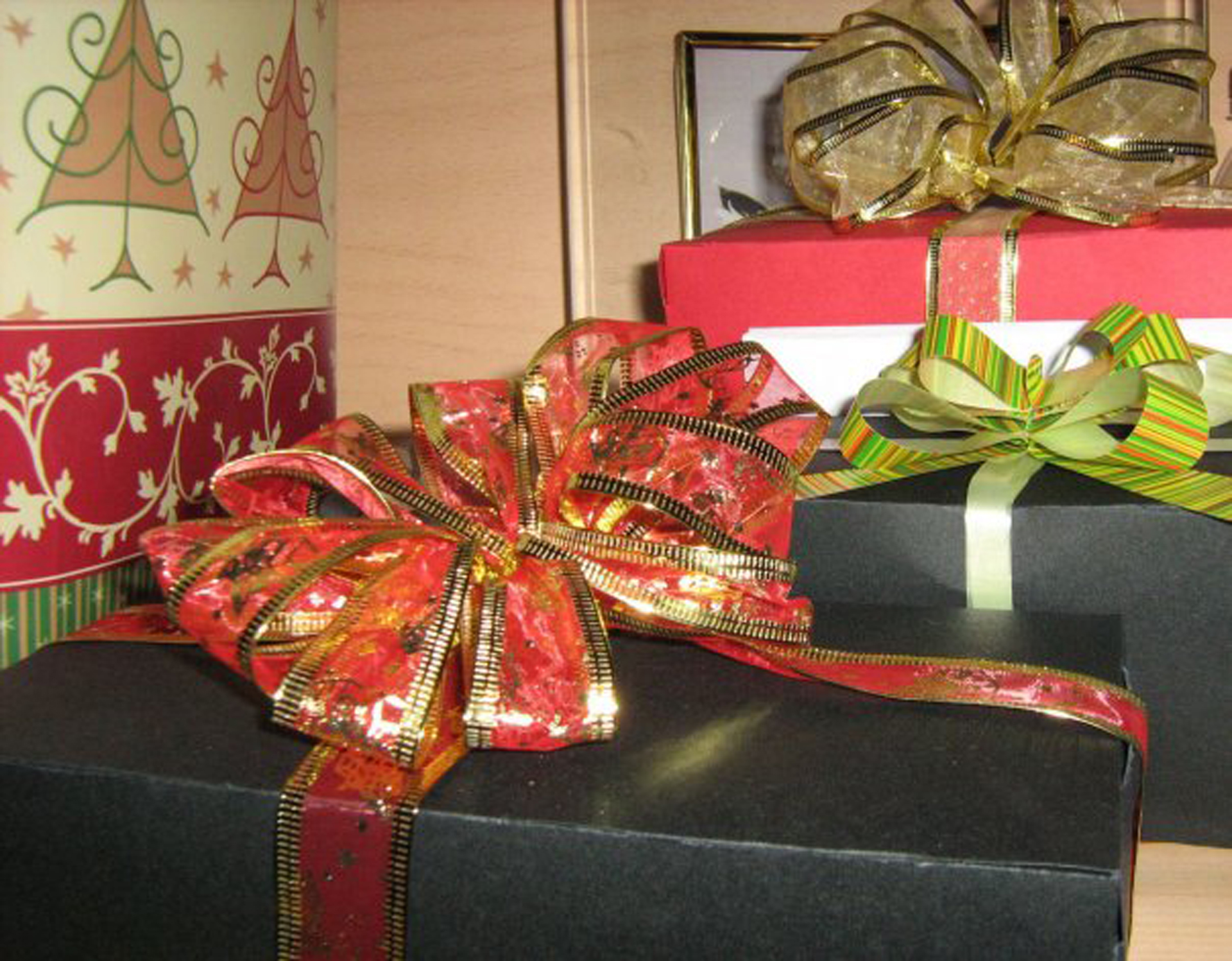
photo credit: freeimages.com/todorovasnya
By Melanie Stewart
Last week’s article provided ways to reduce waste and recycle during the holidays, but wait, there’s more! There are many ways reduce the amount of waste heading to the landfill and you can help others while you’re at it.
Did this holiday season find you buried under catalog clutter? Remove yourself from mailing lists (they can help with unwanted phone calls too!) so you don’t have to deal with them. Recycle any you may have received.
While recycling is great, to really have an impact, reducing and reusing is the best way to go. Did you or your kids get battery operated gadgets? Rechargeable batteries are worth the extra up front cost, both for your budget and the environment. If you upgraded your electronic devices, remember to repurpose or recycle the old ones.
Did you struggle to buy gifts for people on your list? Or struggle to find time to get it all done? Start talking to your family now about ways to make changes for next year; focus less on presents and more on your time and happiness, purchase experiences instead of things, and find a way to reduce what needs to be purchased.
Speaking of gifts, let’s face it, there’s a decent chance you got a gift you don’t want. Maybe some shower gel with a scent that’s not for you? Clothes that don’t quite fit or just aren’t your style? A food basket that’s not your taste? Maybe you have leftover canned or packaged goods bought for holiday cooking you didn’t end up using?
Don’t throw these items away or let them clutter up your home, donate them. Lots of people donate items during the holiday season, but the need is there year round, and especially when it’s cold outside.
Unopened toiletries (including hotel/travel size), scents, clothing, functional items, electronics, and non-prepared food can be donated to a variety of shelters and charities, including Youth Emergency Services, Siena Francis House, Food Bank for the Heartland, Salvation Army, Paralyzed Veterans of America, Habitat for Humanity ReStore, Open Door Mission, just to name a few. Check out Donation Town to find a charity near you.
If you or your child received books and you need to make room on your shelf, don’t forget the Little Free Library!
